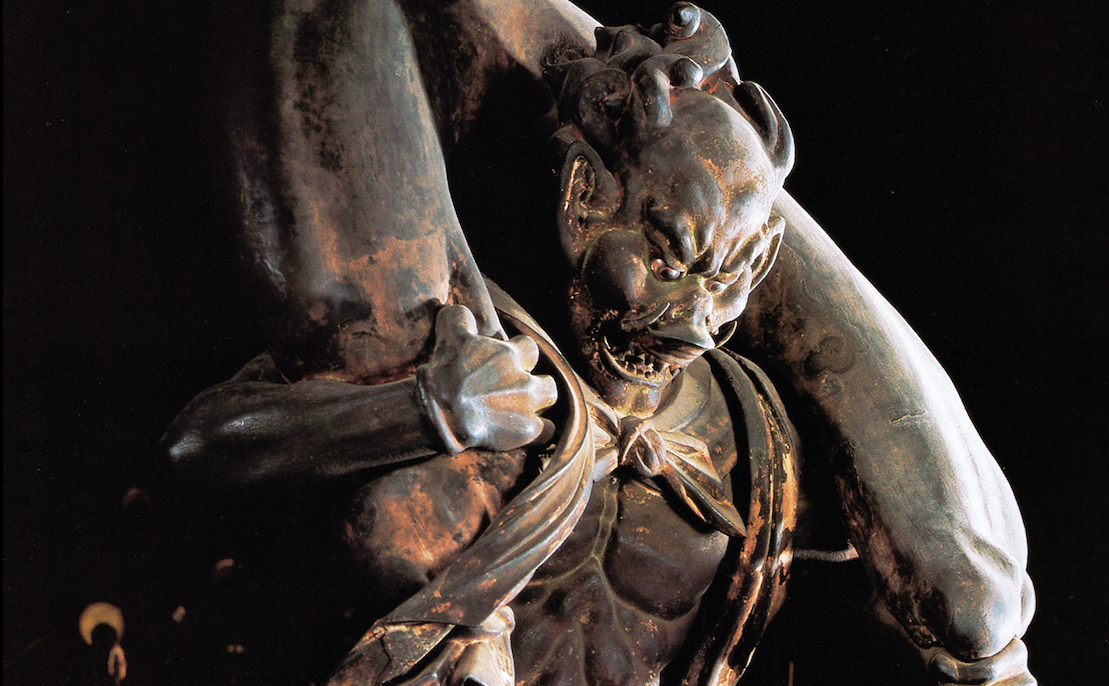Who let the winds out, who, who?
In ancient representations, Fujin, the Japanese wind god is often shown with disheveled hair, bulging eyes and a bag around his neck that contains all the winds. This strikes a chord amongst Greek and Roman scholars. It has been said that Fujin borrowed some of his characteristics from Boreas, the Greek god of the North wind. The identification raises at least two questions: can we really identify Fujin with Boreas? And, if so, how did these pictures travel from Ancient Greece to Japan?
In ancient vases and carved stone reliefs, Boreas blows wind through his mouth and has a huge set of wings but no bag of any kind.
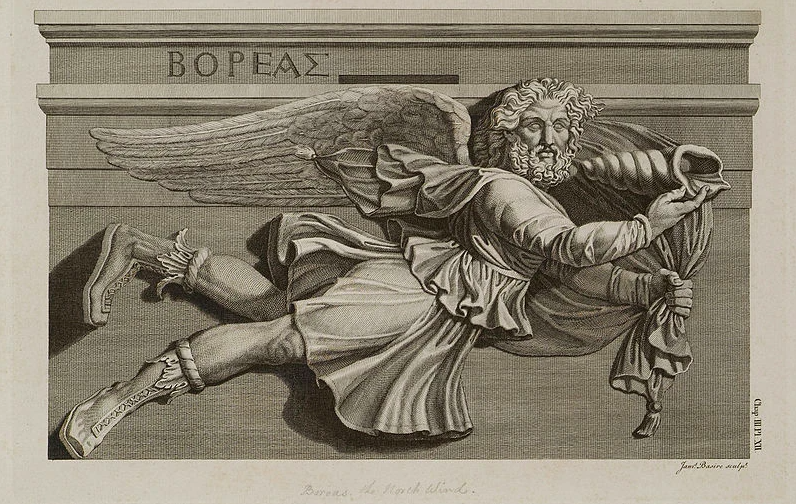
An episode of the Odyssey featuring Aeolus, ruler of the Winds, gives us the answer. After the Trojan war, the Greek heroes returned to their homelands. However Ulysses wandered on the seas many years before getting back to his kingdom, his wife and his son. On his way, he stayed a month at the court of Aeolus.

He charmed the old man by telling him stories of the Trojan war and his own adventures at sea. When he departed, Aeolus gifted him with a bag containing winds for a safe journey home. However while he was asleep, his companions opened the bag hoping to find a treasure and let the unruly winds escape, thus nearly sinking the ship. Ulysses begged Aeolus for another bag of winds but the god refused angrily. Ulysses had made a poor use of his gift and the gods were obviously against him.

We can imply from all this that Fujin was identified with Boreas but that the bag comes from an episode of the Odyssey with a difference however. In the Odyssey, the bag is a mere accessory, given to Ulysses in a specific context ; for Fujin, the bag became a permanent attribute, a sort of bellows to blow air. We must now consider the second question : how could Fujin’s pictures be influenced by Greek art and literature?
There are other instances of such influence. In the Thousand and one Nights, a collection of tales compiled in Arabic language during the Islamic golden age, in his third travel, Sindbad the Sailor arrives on an island ruled by a one-eyed monster who eats his companions one by one starting with the fattest. This reminds us of Ulysses’ encounter with the Cyclop. I am not Scheherazade, so if you wish to know how Ulysses and Sindbad got rid of the monster, you will have to read the story.

We could argue that Homer’s epic poems played a major role in the education of Greek and Romans and they were known throughout the Mediterranean world. We can understand how some of the episodes were woven into the web of the Thousand and one Nights. Japan is far more distant than the Arabic peninsula. However we have literary and archeological evidence to show us how Greek culture permeated Japanese mythology.
The conquests of Alexander the Great (356 bce-323 bce) :
Alexander was the King of Macedonia (a region north of Greece). With an army of Greek and Macedonian soldiers he defeated the mighty Persian Empire. He went on to conquer Egypt, Central Asia and even reached India.

He died young without leaving an heir and his generals created kingdoms out of the spoils of his conquests. Some of these Hellenistic kingdoms were short-lived but Greek culture and language had a deep, lasting impact on these regions. Bactria (actual Afghanistan) was one of these kingdoms ruled for a short time by the Macedonians before it became the fief of the Kushans. They reached their apogee with Emperor Kanishka the Great (127-150 CE).
Some coins show on the obverse the emperor sacrificing to the gods and on the reverse the picture of a wind god. The most ancient coins have an inscription which allows us to identify the god as Oado, an Iranian wind god.

The more recent coins have the Greek inscription ANEMOC which means Wind. There are great similarities between the Greek and Iranian god. Both run towards the left, blow wind through their mouth and raise their arms holding a cloak swollen by the winds. The Greek god has wings like Boreas. The bag of wind does not appear yet even though the swollen cloak has the shape of a bag. The coins are evidence that people came to identify Greek and local wind deities.
Traveling along the Silk Road
The rise of the Roman Empire and of the Han dynasty(200bce-200ce) in China promoted exchanges between West and East. Chinese silk was widely sought by the Roman aristocracy. Other goods imported from the East included tea, porcelain, dye and perfumes. Among Western exports were horses, honey, wine and gold. The Silk Road or rather the Silk routes were a network of Eurasian trade routes active from 200 bce till the mid fifteenth century, spanning over 4000 miles. The maritime Silk Road extended to the East China Sea and the Yellow Sea to connect China with the Korean Peninsula and the Japanese archipelago.

The ebb and flow of ideas:
Trading activities over many centuries facilitated the transmission not just of goods but of ideas, scientific inventions, culture, art and religions. In Central Asia we find silk textiles with Greek mythological motifs such as centaurs or tritons (sea-horses).
Under the Tang Dynasty, Chinese were fascinated by the camels that were more of use than horses to carry men and goods across deserts and little Bactrian camels made of glazed ceramic were placed in the tombs of wealthy people.
Religions such as Zoroastrianism, Christianism, Judaism, Islam, Buddhism spread throughout all Central Asia through these trade routes. This led to syncretism, an amalgamation of different religions and their symbols. . Buddhism played a major role in the diffusion of new ideas and images. It was one of the first great missionary churches in the history of religions and missionaries traveled far and wide to teach and preach. Buddhist monasteries were established along the Silk Road and they were refuges in case of attacks, guest houses but also centers of alphabetisation and diffusion of the new religion.They were kind of YMCAS of the Silk Road ! Buddhism was open to other cults, religions and art forms.. Statues of Bodhisattvas found in Gandhara borrow their features from Greek Sun God Apollo and are magnificent illustrations of Greco-Buddhist art.
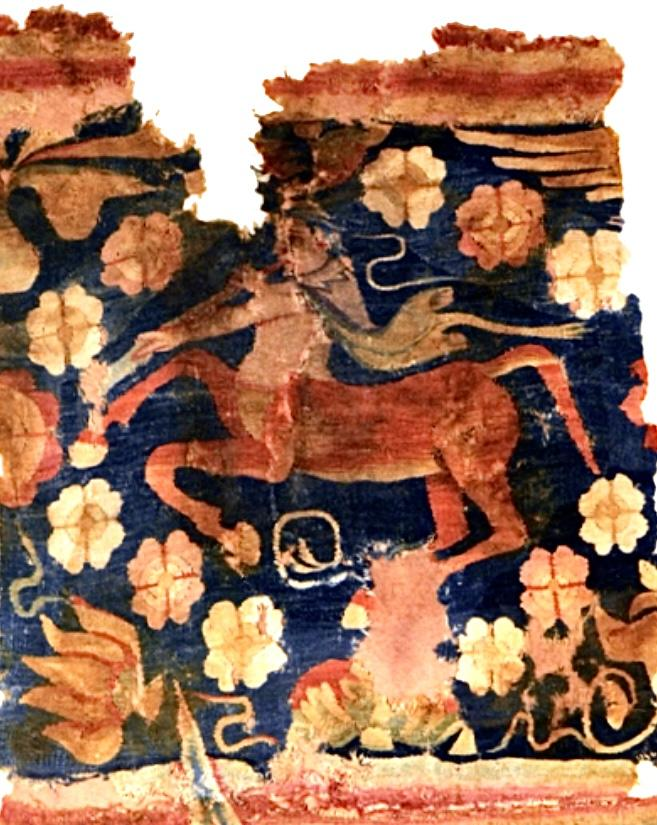
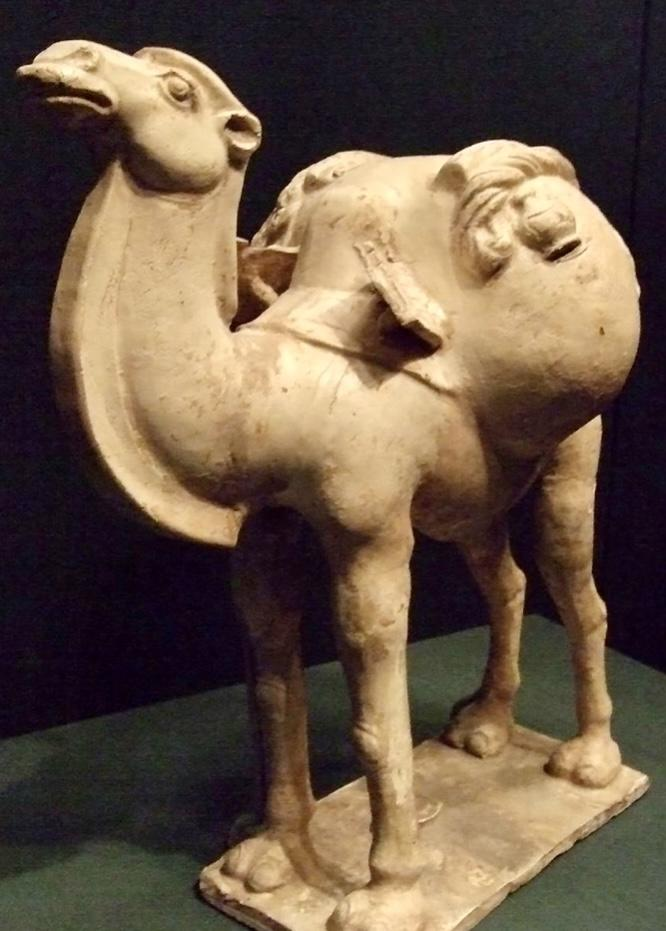
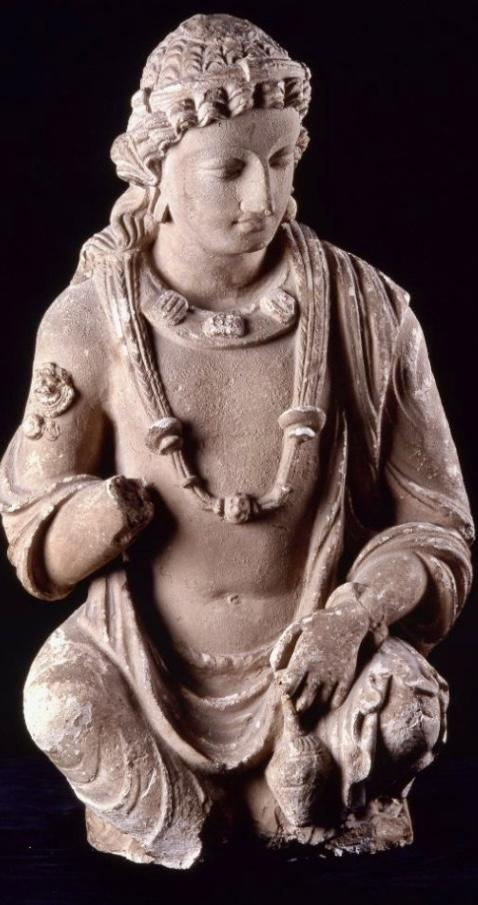
We are not surprised now to find representations of a god carrying a bag of wind worshiped under different names all along the major sites of the Silk Road. In China, the god was worshiped under the name of Feng Po (Uncle Wind) and we have evidence of a Wardo who arrived in Japan at the same time Buddhism did in the sixth century. This Wardo gave his features and attributes (the bag of winds) to Fujin.
These three pictures show the presence of a wind deity carrying a bag throughout the Silk Road. First we have a picture of Boreas from Gandhara, then one of the Chinese god from the Tarim basin and last of all Fujin.

It wouldn’t be accurate however to state that Fujin is but the final form of a long line of wind gods that have their origins in Ancient Greece. Fujin is a very ancient Japanese deity belonging to the Shinto pantheon. His genealogy, the mythological stories he appears in are Japanese. However his bag of winds is without a doubt of Greek origin and was imported by Buddhism. Fujin was integrated in the Buddhist pantheon, his statues were placed as protectors at the entry of sanctuaries and under the influence of Buddhism, he became a more benevolent god.
Fujin’s bag shows how a religion can absorb the gods and symbols of other religions, sometimes reshaping them and giving them new meanings.
In 2014 UNESCO designated a portion of the Silk Road as a World Heritage site. The New Silk Road is used to describe several large infrastructure projects along many of the historic trade routes.
The Silk Road Project is a non-profit organization initiated by Japanese cellist Yo Yo Ma in 1998, promoting multi cultural artistic exchanges.
It is time to end this blog. To quote Homer: «words as empty as the wind are best left unsaid. The link will let you listen to a musical composition from the Silk Road Ensemble entitled Wandering Winds: https://youtu.be/Mv2KugYZfxs?si=XwV9tYt2odokWdza
Sources:
https://justonky.wordpress.com
To learn more about the Silk Road Project:
https://en.unesco.org/silkroad/
Image Source: wikimedia.org, the-demonic-paradise.fandom.com, pinimg.com, meisterdrucke.fr, storage.canalblog.com, britannica.com, guimet.fr.
